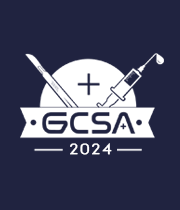Title : Application effect analysis of personalized nursing intervention based on KANO model in patients with chronic cervicitis after hysteroscopic electrotomy
Abstract:
To analyze the effect of individualized nursing intervention based on KANO model in patients with chronic cervicitis after hysteroscopic electrotomy.
Methods: A total of 90 patients diagnosed with chronic cervicitis and treated by hysteroscopic electrotomy in our hospital from June 2021 to June 2023 were randomly divided into control group and observation group, with 45 cases in each group. The control group received general postoperative intervention, and the observation group received KANO mode of nursing intervention. Both groups received continuous nursing for two weeks. The changes of self-rating Depression Scale (SDS), self-rating Anxiety Scale (SAS) and Quality of Life Scale (SF-36) scores before and after care were compared between the two groups, the differences of treatment compliance and satisfaction with nursing during hospitalization were compared between the two groups, and the probability of postoperative complications (general fatigue, vaginal fluid, wound infection, etc.) were compared between the two groups.
Results: There were no significant differences in operation time and intraoperative blood loss between the two groups (P > 0.05). The time of first exhaust and getting out of bed in the observation group were shorter than those in the control group, (1.02±0.43) vs (2.26±0.67) (1.89±0.37) vs (3.48±0.82), respectively (P < 0.05). The treatment compliance (χ2=4.41, P=0.04) and total nursing satisfaction (χ2=4.05, P=0.04) of the observation group were significantly better than those of the control group. After nursing, the SDS and SAS scores of the two groups were lower than those before nursing, and the scores of the observation group were (31.58±3.14) and (22.79±2.58), respectively, which were lower than those of the control group (39.26±3.01) and (30.12±2.79) (P < 0.05). After nursing, the quality of life scores of the observation group were significantly higher than those of the control group (55.29±8.37) vs (69.36±9.12). The hospitalization time and postoperative recovery time in the observation group were shorter than those in the control group (3.12±0.78) vs (5.26±1.21), (10.29±3.18) vs (15.37±3.56), respectively. The complication rate of the observation group was lower than that of the control group (χ2=6.05, P=0.01).
Conclusion: Individualized nursing intervention based on KANO model can reduce the degree of depression and anxiety, improve the quality of life of patients, and facilitate postoperative recovery in patients with chronic cervicitis after hysteroscopic electrotomy.



